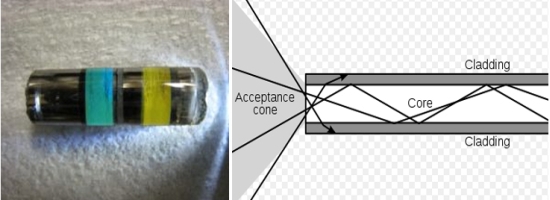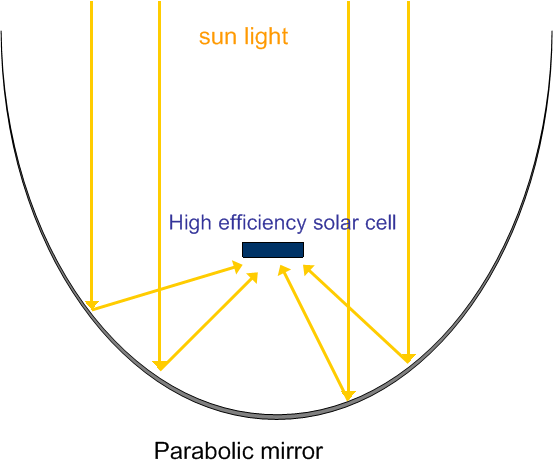So we have been talking about all the various problems of solar energy. And I am sorry to start it off with such a negative note but I did it because I wanted to end it on a positive note.
Yes , that’s right, solar energy holds a lot of potential And it “IS DEFINITELY” the future of our energy needs.
So why is everyone so optimistic on solar energy?
It’s simple. Because ever since life began on earth nature has always depended on solar energy for it’s continuous energy needs and evolution. Even the fossil fuels we use are indirect products of solar energy. The solar energy provided the animals and plants with energy as we know by photosynthesis and the food chain. These plants and animals died and their remains were buried under pressure and heat to form coal and petroleum as we know today.
So it’s obvious that solar energy should be our natural choice to be looking for. In fact Thomas Edison said that solar energy was the most natural as well as the most abundant source of energy available for us. Hence it is imperative that we try to find ways to harness it as much as possible.
So what’s the solution?
Simple!
Never give up!
That’s right scientists are striving today to make solar energy as much viable as possible and I have good news for you!!! Solar energy has made quantum leaps and it is proving to be a boon for many cities with abundant sunlight. Even during the night!
Here are some of the problems which are being tackled about solar energy.
Efficiency
The biggest drawback to efficiency is costs . Well scientists have been working on just those lines and they really have managed to increases efficiency and reduce costs as well. Yes they have developed new techniques and methods to greatly enhance consumer level use. It won’t be long before you will see everyone changing their power supplies just like how everyone is going digital from cable TV.
How?
1) Quantum dots
The solar PV cells are made even more tiny so that a greater surface area is exposed to the solar radiation resulting in good efficiencies.Nanotechnology holds huge promise in energy harnessing storage, as well as other industrial needs and the energy companies are no exception. And the best part is there has been steady progress in using quantum dot PV cells.

2) Splitting the solar spectrum
Solar PV cells use only a part of the solar spectrum to produce usable energy. The remaining part is lost as heat. This heat can actually reduce the efficiency of the system. Now given how summers can be blazing hot in India especially. We wouldn’t want a power supply that runs on solar power and yet gets fried with excess heat.
Now this is where material scientists(the broader group under which falls the nanotechnology scientists) play their part in making the cells more heat resistant and usable under heat. A new technology uses a material such that it emits only those wavelengths which are harnessed by the cells to produce energy.
Some people have even used the simple fibre optics which was originally used in communications. But since it characterises no loss transmission it is also a pioneer in using correct frequencies.

3)Concentration cells
Concentration cells uses parabolic reflectors to focus the sunlight onto a small area of the PV cells which is found to increase efficiencies amazingly. Photoelectric emissions which requires greater frequency to produce electrons of good kinetic energy, while photoelectricity requires greater intensity of sunlight to produce more electricity.
Hence we have a reduction in costs with materials used and we get more usable energy from the same amount of solar radiation. So it’s a pretty neat technique.

But what about the production of energy during the night and what about cloudy and rainy seasons?
Again I have good news as researchers have found more and more efficient ways to store solar energy during the night time as well. A new method that they have developed is using lots of reflectors to focus the radiation onto a tower. That tower contains a form of salt and the solar heat melts that salt to a molten state. This molten state dissipates heat very slowly and it is kept in as much thermal insulation as possible. During the night the heat from this molten salt is used to power up homes during the night!! In fact it can well last for 8 to 10 hours for commercial needs of a locality. Not bad for a salt based system!
As for the seasonal changes that’s where the limitations come in. But researchers are still working on high altitude solar panels and increased efficiency panels. In fact here again fibre optics plays an optimistic role in transferring energy from high altitudes. However it won’t be enough for commercial energy needs and this is where the other renewable sources come to play like hydel energy, wind energy.
In fact if you think about it carefully summer is the time when there is no wind or rain and solar panels would rule. But the other seasons are sufficiently more windy and rainy which means that wind and hydel power would be a boost. So the various renewable energy sources complement each other.
After reading about so many new revolutionary inventions and techniques the world doesn’t seem so bleak due to the global warming catastrophe anymore does it? However that does not give us reason to continue our wasteful ways. We must continue working on sustainable development so that our future generations continue to reap the benefits of nature and keep the human race moving forward.

No comments:
Post a Comment
Do not spam. Spammers will be banned from this site